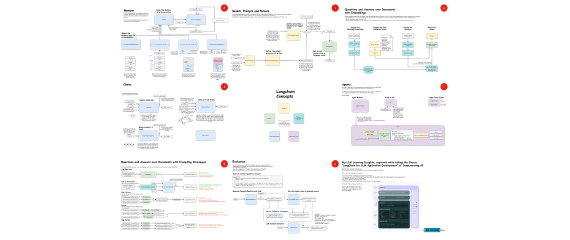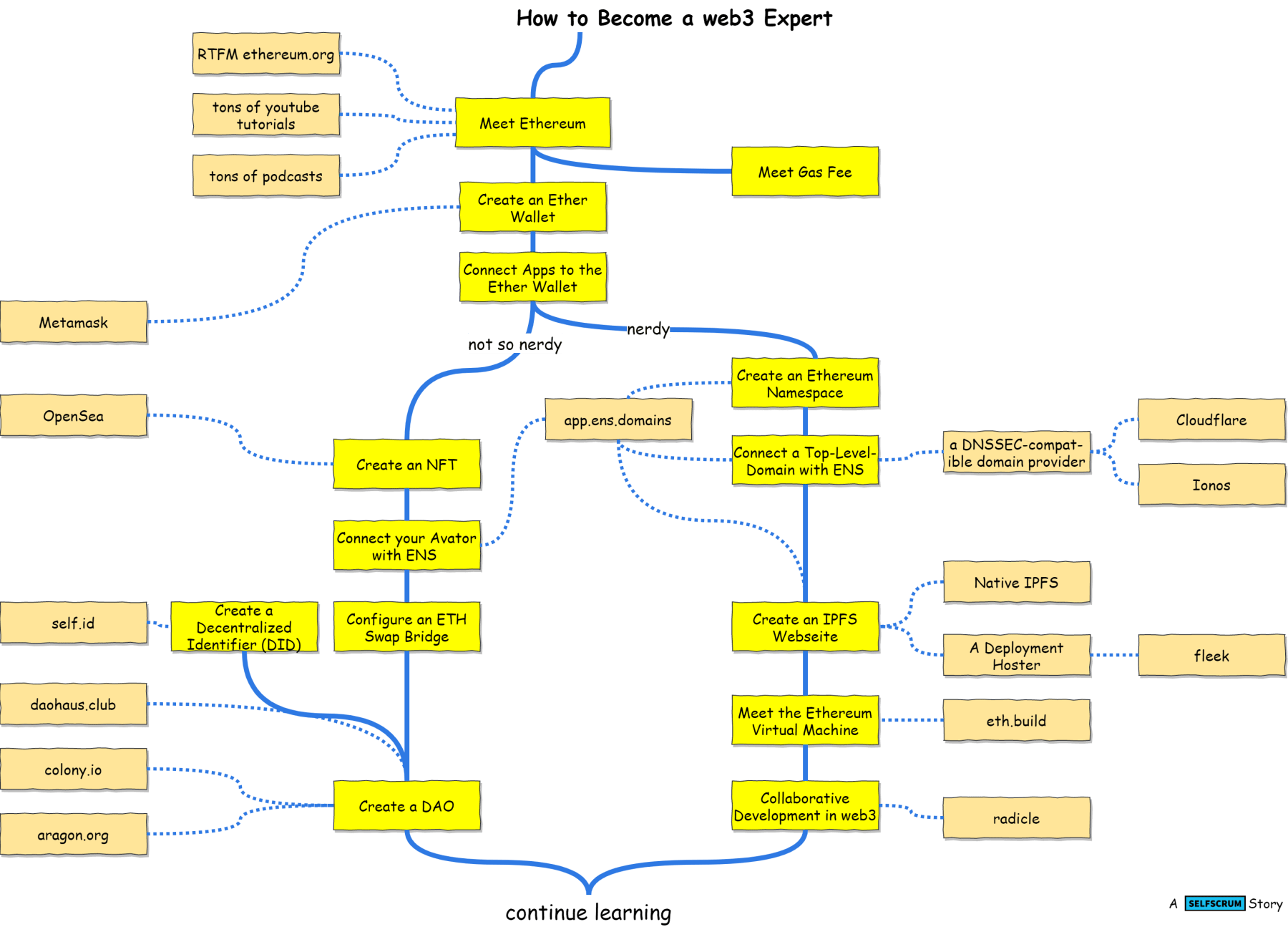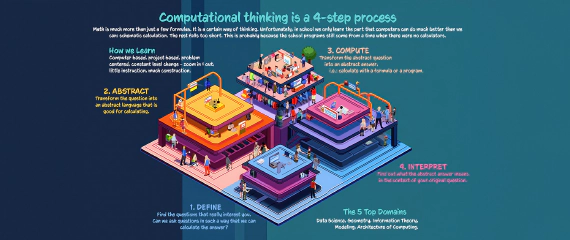
Learning AI application
Generative AI is increasingly creeping in nearly any task I am working at these days, so it’s time to learn more …

Consistent with the last post, my eagerness to learn and a rainy vacation week is motivation enough for me to take a look at the previously impenetrable web3 thicket. Sure I’ve heard of blockchain, cryptocurrencies and NFTs, but how it all ties together? As always, it’s hardest to get a good starting point. After some very shallow Youtube tutorials and even more very nerdy expert podcasts that I only half understand, I am the proud owner of an Ether crypto wallet, a Ledger crypto stick with a few bitcoin chunks on it, and a first vague idea of where the journey is going.
As soon as you leave the systems with the basic technologies, by the way, you quickly enter an inscrutable thicket of apps and communities, at least for the not-yet-expert, some of which seem to have dubious origins. Consumer governance and experience are often still foreign words here; it’s still the wild west (or east) in many places. But that’s why we’re here. However, whether one then actually goes to the Chinese or Russian crypto provider with larger sums of money?
My focus here is not trading, though, but finding out what other use cases this technology supports. The NFT hype last year was an interesting large-scale sign of the dawn of the net economy, even if the expensive run on cat comics has some shaking their heads. However, the system behind it is full of potential - smart contracts, which are small pieces of code that are hardwired to a token secured by the blockchain, allow for orderly processes and value creation within distributed groups whose members don’t need to know each other, even without oversight (hence “zero trust support” - I don’t need to trust anyone else for value creation to succeed).
Accordingly, DAOs are relatively high on the hypelist this year. “Decentralized Autonomous Organizations” offer a blend of organization and technology, allowing for automated management. However, I’m not quite there yet.
Here is an overview of my learning path so far.

If you understood Metamask, you also know how transactions work in Ethereum. Especially the Mobile App is interesting, it allows to manage NFTs too. A few dollars fall by the wayside through trial and error - what becomes experientially clear to me here is the very different pattern of time and value that a blockchain-based ecosystem follows. Transactions take much longer and are much more expensive than anything seen in previous online business. “Trying it fast” can get expensive quickly here if you don’t know the right tricks yet. I’m happy if you donate a few coins for my research :)
So then I follow the RTFM Approach and start reading the original documentation at ethereum.org. Now slowly, real, applicable knowledge emerges and I arrive at the Ethereum namespace, the human-readable gateway into the Ether world, so to speak.
Here I find many interesting attributes of my created namespace selfscrum.eth. It’s way too expensive how I bought it, I learn later - I filled up at rush hour and paid top dollar to update the blockchain with my data. “Gas Fee” it’s called, and like at the gas station at the beginning of the vacations, prices are highest when everyone is in line.
Gradually, I figure out that I can assign my own human-readable name, add an avatar to the namespace (NFT says hello), link a classic web address, and link a website stored decentrally in the IPFS (Interplanetary File System). This is a peer2peer network that securely manages the actual digital artifacts - even a small image would be far too large for the blockchain. Therefore, the wallet only stores references to IPFS artifacts and they are safely in the interplanetary safe. Document management goes crypto, so to speak.
Creating an Decentralized Identifier (DID) is a breeze and might help later to be better visible in web3 applications. Here’s mine.
I could write a separate blog article from each aha moment. I’ll leave it at the hints here - anyone who has reached this point already knows the right search terms to find the answers quickly.
One stumbling block is my domain provider STRATO, which does not allow the required DNSSEC management of domains. Too bad, so I switch to ionos.de, where I find the desired feature in the DNS Pro add-on tariff and now have selfscrum.xyz as a practice object. With the IPFS hoster Fleek, I find a good deployment environment that is very similar to the Netlify workflow I’m used to. The system is a bit slower than Netlify, but in the end offers storage on the IPFS network - my current address is there https://ipfs.io/ipfs/QmSeNMwmDhZKyhea2xYD3jpdWfiERJAYJTRaz17XEm7f5q/ or just via the xyz domain associated with it. If you look carefully, you will find small differences on the website about selfscrum.xyz and about the selfscrum.eth.link access that ENS lists. This is because any change to the website would trigger an ETH transaction again - the IPFS address changes with each version. At a minimum of $15, this is then quite an expensive way to manage one’s website after all. Fleek takes over the intermediary function here and updates the website transparently to the linked domain without incurring further costs. Only if a version is to be permanently included in the blockchain, a gas fee becomes necessary again.
On my journey in web3 so far, I have come across many new insights and I have yet to discover many site paths that I have not thoroughly explored. At the moment I am trying to get to my intermediate goal, the DAOs, as quickly as possible, but without skipping the basic insights. I think the path presented here has done that quite well, and anyone who feels a bit of technical adventurousness can certainly follow it.
DAOs have also been on the market long enough now to find the first “ready-made” application providers on the market. From DAOHaus, which essentially represents the EVM code in an appealing way to the outside world, to Colony.io, to Aragon.org with a complete convenient governance management, you can find different models of how DAOs can be utilized. So the decentralized community management can begin, I will report!
(Title hero image based on original artwork of ethereum.org, CC BY 4.0)

Generative AI is increasingly creeping in nearly any task I am working at these days, so it’s time to learn more …

A while ago I came across the book -The Math(s) Fix- by Conrad Wolfram. I was only able to take a quick look at it at …
Whether in free school or as a self-learner:
Online and global, from 8 years on towards your personal skill set.